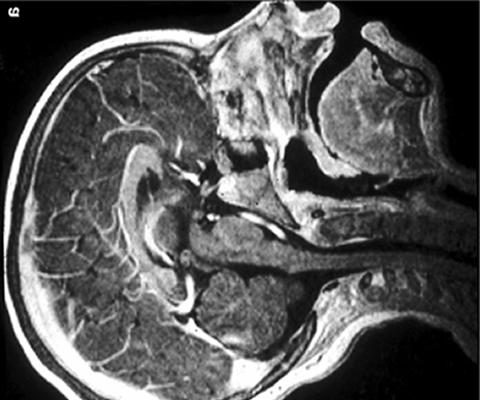Effects of Anaesthesia
Much of the pharynx, including the tongue, consists of muscle. Under anaesthesia muscle tone is diminished and the pharyngeal airway may no longer be kept patent.
This is particularly so in the supine position, where relaxation of the tongue and jaw muscles can result in the tongue falling back against the soft palate to occlude the oral airway as shown in Fig 1.
Pre-existing factors such as adenotonsillar hypertrophy make airway obstruction more likely because the nasopharyngeal passage is already partially blocked.

Fig 1 MRI of an anaesthetized child showing the tongue falling back against the soft palate with narrowing of the nasopharyngeal airway. Image courtesy of Von Ungern-Sternberg et. al. Pediatric Anesthesia Wiley-Blackwell 2005 15: 181-89